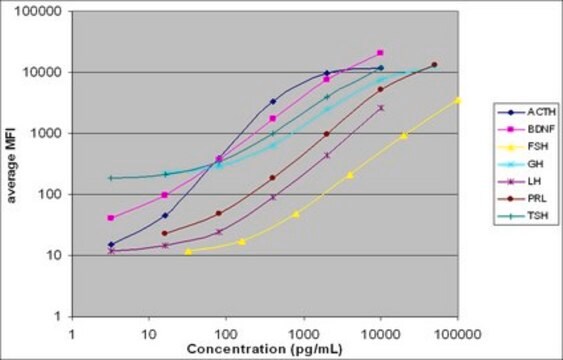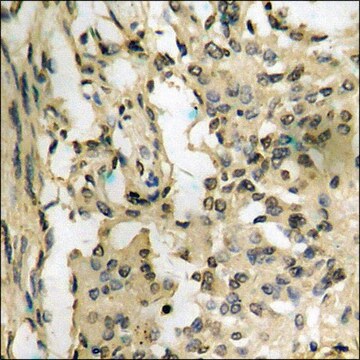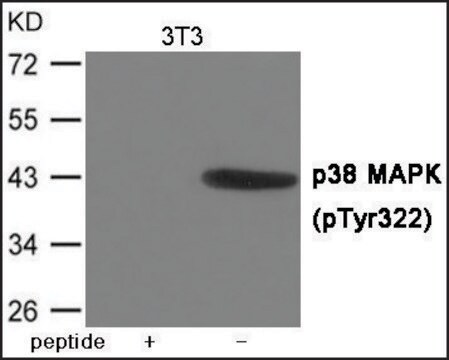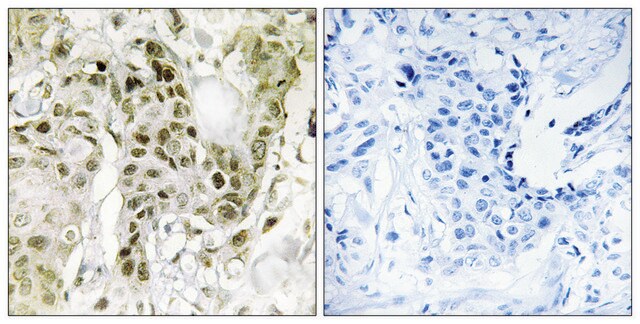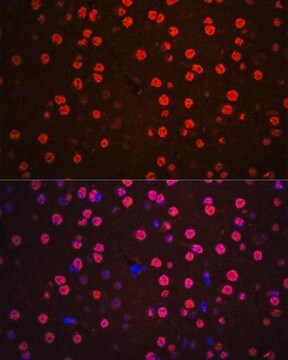MABS64
Anti-phospho-p38 (Thr180/Tyr182) Antibody, clone 6E5.2
clone 6E5.2, from mouse
Sinónimos:
mitogen-activated protein kinase 14, cytokine suppressive anti-inflammatory drug binding protein, stress-activated protein kinase 2A, Cytokine suppressive anti-inflammatory drug-binding protein, CSAID-binding protein, MAP kinase MXI2, MAX-interacting pro
About This Item
Productos recomendados
biological source
mouse
Quality Level
antibody form
purified immunoglobulin
antibody product type
primary antibodies
clone
6E5.2, monoclonal
species reactivity
human, mouse
technique(s)
immunocytochemistry: suitable
western blot: suitable
NCBI accession no.
UniProt accession no.
shipped in
wet ice
target post-translational modification
phosphorylation (pThr180/pTyr182)
Gene Information
human ... MAPK14(1432)
General description
Specificity
Immunogen
Application
Signaling
MAP Kinases
Quality
Western Blot Analysis: 0.5 µg/mL of this antibody detected p38 on 10 µg of Anisomycin treated and untreated HeLa cell lysate.
Target description
Physical form
Storage and Stability
Analysis Note
Anisomycin treated and untreated HeLa cell lysate
Other Notes
Disclaimer
¿No encuentra el producto adecuado?
Pruebe nuestro Herramienta de selección de productos.
Storage Class
12 - Non Combustible Liquids
wgk_germany
WGK 1
flash_point_f
Not applicable
flash_point_c
Not applicable
Certificados de análisis (COA)
Busque Certificados de análisis (COA) introduciendo el número de lote del producto. Los números de lote se encuentran en la etiqueta del producto después de las palabras «Lot» o «Batch»
¿Ya tiene este producto?
Encuentre la documentación para los productos que ha comprado recientemente en la Biblioteca de documentos.
Nuestro equipo de científicos tiene experiencia en todas las áreas de investigación: Ciencias de la vida, Ciencia de los materiales, Síntesis química, Cromatografía, Analítica y muchas otras.
Póngase en contacto con el Servicio técnico
